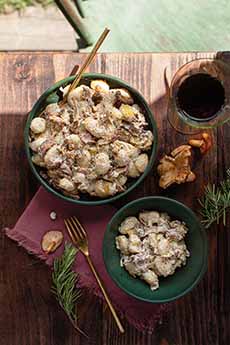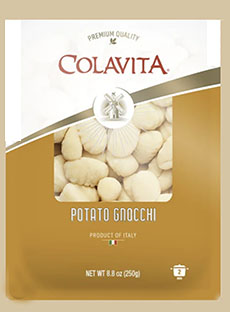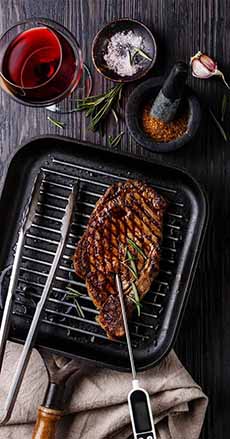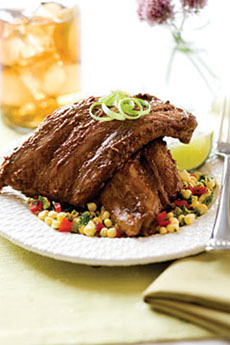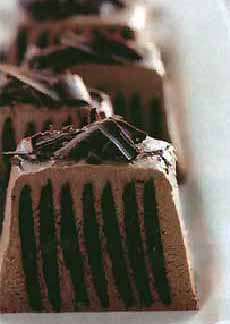|
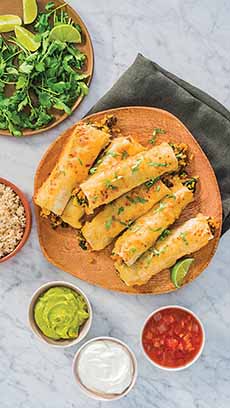
[1] Vegetarian taquitos filled with black beans, brown rice, collards, corn, and pumpkin purée (photos #1 and #2 © Success Rice | Family Features).

[2] Rice is ready in just 10 minutes.

[3] Black beans add protein to this vegetarian recipe (photo © Bush’s Beans).

[4] Pumpkin purée creates a nutritious sauce for the following (photo © Libby’s | Nestlé).
|
|
Long before Taco Tuesday, there was Meatless Monday. While the latter may seem to be a 21st-century idea, it actually first appeared during World War I (when it was called Meatless Tuesday). Here’s the history of Meatless Monday.
Almost every health, nutrition, and sustainability expert advises: Eat a primarily plant-based diet. It’s better for you and the planet.
We at THE NIBBLE would like to observe that it’s not just about meat. Cheese and other dairy products, including animal milk and milk-based products, like yogurt, cheese, cottage cheese, and ice cream, contribute the same greenhouse gases that meat does.
Yes, you could eat fish; in fact, substituting more seafood for meat is another important resolution.
But if you really want to help Planet Earth, we propose changing Meatless Monday to Vegan Monday.
Regardless of your motivation, opting for meatless or vegan meals regularly provides plenty of benefits that extend from the health of you and your loved ones to your wallet and the environment.
Whether you’re a vegetarian, vegan, considering making some lifestyle changes or just want to give an on-trend meal prep strategy a try, going meatless can help reduce your intake of red and processed meats, decrease greenhouse gas emissions that cause climate change and save money on substitute ingredients like grains, vegetables, fruits and legumes that are often cheaper than meat.
RECIPE: BAKED VEGETARIAN TAQUITOS
This recipe saves time with Success Boil-In-Bag Brown Rice (which is whole grain). Ready in just 10 minutes without measuring or the mess, boil-in-bag grains make mealtimes quick and easy.
Success Rice is available in basmati, brown, jasmine, and white rice, plus quinoa and two white rice blends: one with peas, carrots, and red bell peppers; one with black beans, corn, and bell peppers.
Find more meatless meal inspiration at SuccessRice.com.
Prep time is 15 minutes, and cook time is 20 minutes.
Check out more Meatless Monday recipes below.
Ingredients For 4 Servings
You can substitute vegan sour cream and cheese for any of the dairy products.
1 bag Success Brown Rice
1 cup shredded collard greens, packed (substitute kale)
1/4 cup frozen corn
1 cup canned black beans, drained and rinsed
2/3 cup canned pumpkin purée
1-1/2 tablespoons taco seasoning (store-bought or recipe in footnote)
8 flour tortillas (6 inches each)
1 cup Monterey Jack cheese, shredded (substitute Cheddar)
2 tablespoons olive oil
Sour cream, for dipping
Salsa, for dipping
Guacamole, for dipping
Fresh cilantro, for garnish
Preparation
1. PREPARE the rice according to package directions; add the collard greens and corn to the water during the last 5 minutes.
2. PREHEAT the oven to 450°F. Drain the rice and vegetables; transfer to a saucepan. Stir in the black beans, pumpkin purée, and taco seasoning.
3. SPOON 1/3 cup of the rice mixture into the center of one tortilla; sprinkle with 2 tablespoons of Monterey Jack cheese.
4. ROLL up tightly. Place the seam side down on a parchment paper-lined baking sheet. Repeat with the remaining tortillas, filling, and cheese.
5. BRUSH the taquitos with olive oil; sprinkle with the remaining cheese. Bake for 10-15 minutes, or until the tortillas are crisp and the cheese is melted.
6. GARNISH the taquitos with fresh cilantro. Serve with sour cream, salsa, and guacamole for dipping.
|
MORE MEATLESS MONDAY RECIPES
Some cuisines have a preponderance of vegetarian and vegan dishes, owing to a high incidence of lactose intolerance in the general population. Chinese, Japanese, Korean, and Thai recipes for starters, offer tofu or another soy-based protein.
Here are some of our favorite NIBBLE vegetarian and vegan dishes.
Asian Noodle Bowl With Tempeh
Grain Bowl: Wild Rice & Roasted Squash Salad
Hummus Nachos & Tacos
Ratatouille Shepherd’s Pie With A Polenta Top
Stuffed Acorn Squash
Veggie Sandwiches
Whole Roasted Cauliflower
________________
*Taco Seasoning Recipe: Combine 1 teaspoon black pepper, 1 tablespoon chili powder, 1/4 teaspoon dried oregano, 1/4 teaspoon garlic powder, 1-1/2 teaspoons ground cumin, 1/4 teaspoon onion powder, 1/2 teaspoon paprika, 1 teaspoon salt. Store in an airtight container.
CHECK OUT WHAT’S HAPPENING ON OUR HOME PAGE, THENIBBLE.COM.
|







